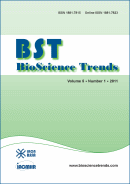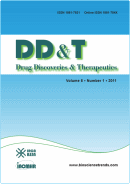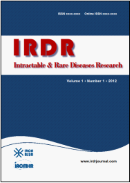BioScience Trends. 2010;4(4):165-169.
Bioinformatic analyses and an expression study of a novel gene associated with metabolic syndrome.
Cui XY, Chen JX, Fang DZ
The investigation of novel genes involved in the derangement of glucose and lipid metabolism is of particular importance in understanding the development of metabolic syndrome (MS). In the present study, bioinformatic analyses were carried out to explore the structures and roles of the proteins encoded by the four cDNA sequences identified in our previous studies as associated with MS. Homology analyses demonstrated that the proteins encoded by Sequence 1, Sequence 2, Sequence 3, and Sequence 4 were homologous with fibrinogen gamma polypeptide, liver fibrinogen-like 1, chromosome 10 open reading frame 104, and an unnamed protein product, respectively. Because the structures were well-known for fibrinogen gamma polypeptide and liver fibrinogen-like 1, further analyses were performed only for Sequence 3 and Sequence 4. Analyses of functional domains showed that the predicted proteins encoded by Sequence 3 and Sequence 4 had multiple phosphorylation and myristoylation sites. These results indicated that the two predicted proteins might be intermediate proteins in some signaling pathways. In order to explore the possible association of Sequence 3 with MS, HepG2 cells, a human hepatoma cell line, were treated with different concentrations of glucose (mannitol as osmotic control) for 48 h. Glucose at concentrations of 22 and 33.3 mM significantly increased the mRNA expression of Sequence 3 compared to glucose at 5.6 mM while mannitol had no significant effect on the mRNA expression of Sequence 3. These results indicated that the mRNA expression of Sequence 3 was positively associated with glucose higher than physiological concentrations.







